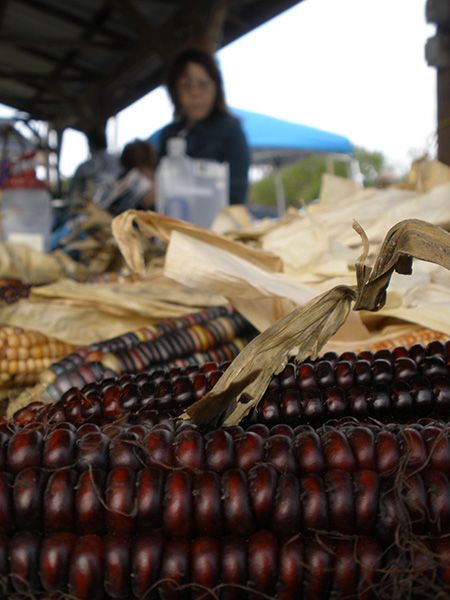Drive around rural Texas and you most likely find fields of corn growing tall and happy in the summer sun. In fact, over 2 million acres of corn is planted annually in Texas, producing over 276 million bushels (1 bushel is equivalent to 8 gallons) every year. The US is ranked first in corn production worldwide, with most of the production taking place in Iowa and Illinois. Corn is undoubtedly part of the American identity.
But did you know that most of the corn that you see growing across the country is actually inedible by humans? 99% off corn planted in the United States is “field corn” and not the idyllic sweet corn that we remember getting stuck in our teeth at summer barbecues. Field corn is produced for animal feed, ethanol, export, surplus, and domestic food uses (i.e. high fructose corn syrup). As farms produce more and more corn year after year, we are rapidly losing the once abundant diversity of corn species that we used to have when corn wasn’t industrialized. For that reason, the Grow Local team at SFC wants you to plant a diverse array of corn this spring and summer and bring back the heirloom varieties of corn that were once grown all over the country.
In order to bring heirloom corn back to the masses, we recommend looking for ornamental or heirloom varieties of corn from local seed sources, and we’d like to highlight a couple varieties that we love to grow. Glass Gem corn – a type of popcorn – is our favorite variety because of the unique colors of the kernels that are reminiscent of exotic gems. If you are looking for corn to produce corn flour, check out the beautiful Rio Grande Blue corn for a delicious blue corn flour or Navajo Yellow for a more traditional yellow color. Sweet corn is always a staple for summer celebrations, and the “King of All White Sweet Corn Varieties” – Stowell’s Evergreen – should be in everyone’s garden this year. For tips on planting corn in your garden this year, see below:

